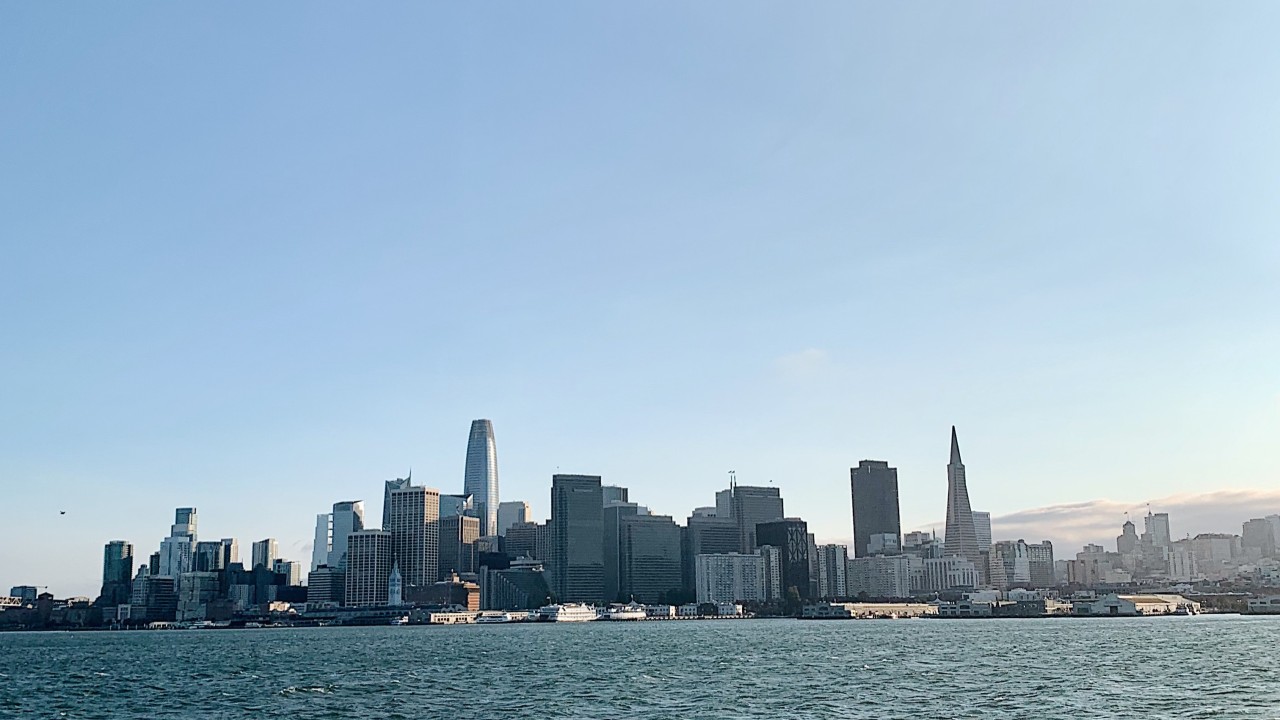I’ve been thinking about commuting lately.
Every few weeks I go to grad school classes on the weekends. Most of the program is online weeknight classes, but once every few weekends there’s an in person “residency” weekend. 9 AM to 5PM for one class, so since I usually take two classes I have class all day Saturday and Sunday.
When I started the program in January 2023 the school was meeting in North Beach in a building across from Levi’s Plaza. At the time I was living in Russian Hill, so my commute was a 10 minute bike ride down the hill there and a 15 minute bike ride up the hill home (depending on my energy level).
Last fall the school moved to a campus in San Anselmo, a small town nestled in the Marin Headlands below Mt Tam. Although the campus is beautiful, I was worried how I would get there. I don’t have a car, and the transit connections seemed limited and confusing. I could take a Golden Gate Transit bus from the city to San Rafael. From there I could wait for a not-very-frequent Marin Transit bus and walk 15 minutes from downtown San Anselmo to school, or bike there from San Rafael.
Over time I experimented with bringing my bike on the bus and biking to San Anselmo from San Rafael. The route wasn’t great, with some protected bike lanes that abruptly ended into traffic and stretches where you had to bike on the sidewalk to avoid being run over. The real excitement came when I realized I could take the ferry.
I started biking to the Ferry Building in the morning, taking the ferry to Larkspur, and biking 30 minutes along Corte Madera Creek to San Anselmo. It took a little longer than the bus – bike combo, but taking the ferry always feels like an adventure, and the bike path along the creek is so beautiful (and safe) I didn’t mind the longer commute. The path snakes along where the bay meets the creek, overlooking the houseboats, with Mt Tam and the Marin Headlands stretched out behind. The kind of view you would travel from around the country to see, and it was just included in my commute for free.
Last Saturday I woke up feeling worn out from a long work week. I was considering taking class from home (in-person attendance is optional, there’s usually around half the students on zoom and half in person). I try and go in person whenever I’m in town as staying on Zoom all day gets old, but sometimes it’s nice to stay home. When I was deciding if I should stay or go, there was one thing that swayed me: the commute. I found myself so looking forward to the bike-ferry-bike commute, I knew I would regret missing it if I stayed home. If I was going to have to be in class all day (either in my room or a classroom), I’d rather get outside, bike around, and see the view. So I packed my lunch, grabbed my helmet, and headed for the ferry.
I realized afterwards how it might seem strange to look forward to a commute. The word commuting has a generally negative connotation, for fair reasons. Like most Americans, my first experience of commuting was by car. In my first job I was driving 1 hour each way from Long Beach to Orange County, sitting on the 91 in bumper to bumper traffic and feeling completely drained. When I first had the option to commute by bike in Santa Monica, it was amazing how dramatically my quality of life increased. I was more energized, in a better mood, and actually looked forward to my commute.
In cities’ push to shift people away from cars and towards transit, walking, and biking, drivers often only see it as what they’re going to lose (parking spaces, travel lanes, access to certain roads, etc). I think we should be positioning public transit (and more flexible travel options) more in terms of what people will gain: higher quality of life from cost savings (I’ve saved thousands of dollars in insurance payments alone since selling my car in 2020), a healthier lifestyle (building exercise into your daily commute), and cleaner air, just to name a few. These sort of options benefit everyone, but we need more people to have access to them so they can experience it firsthand. By emphasizing the quality of life improvements that come with providing transit options other than driving, we can shift the conversation from fear of loss to excitement about the gains.
Lastly, the idea of commute time as the only relevant factor seems strange. My current bike-ferry-bike commute to school (1.5 hours) is longer than my first jobs’ freeway commute to Orange County (1 hour). Of course we need to make transit faster, but the reality is some trips by transit may never be as fast as driving, especially if you’re commuting to a small town in the mountains. Measuring a commute solely by time from one place to another doesn’t factor in the quality of the experience, as I’d obviously never trade my current longer commute for my older shorter one. What’s the time value of the exercise you get biking? Or little moments of contemplation on the ferry as the fog rolls in? The feeling of accomplishment when tackling a hill and flying down the other side? Obviously those things mean something, but if we try to sum them up into time (or economic) value, we miss the point. The beauty of my commute is it creates a small window of space in my day where the time seems to matter less, and it’s more about enjoying what’s right in front of me. I can’t put a time or financial value on that, but I can tell you that I can’t wait for my next commute.

